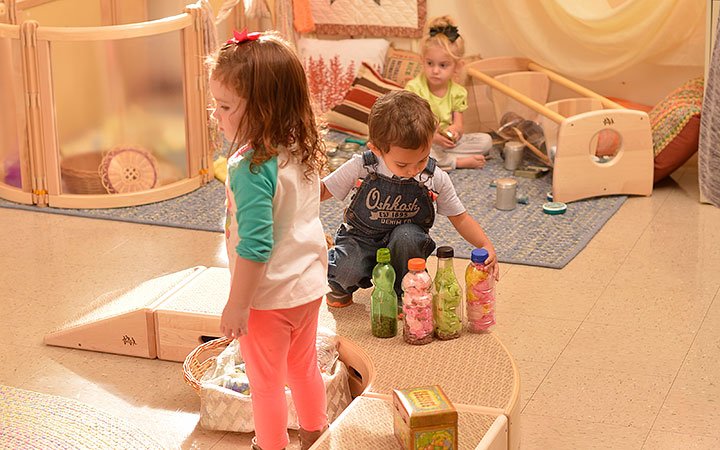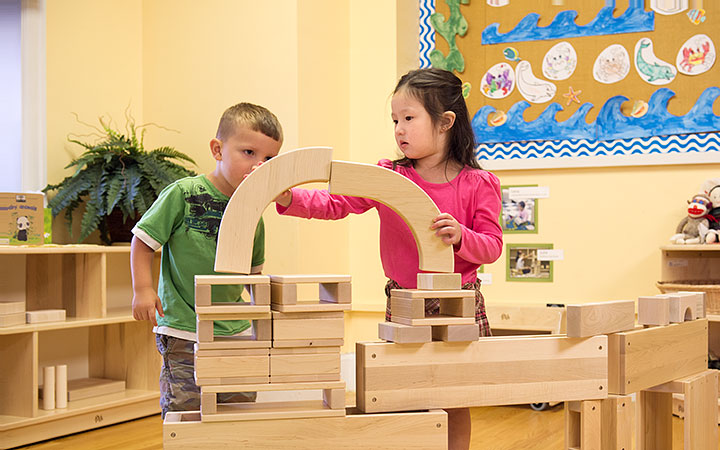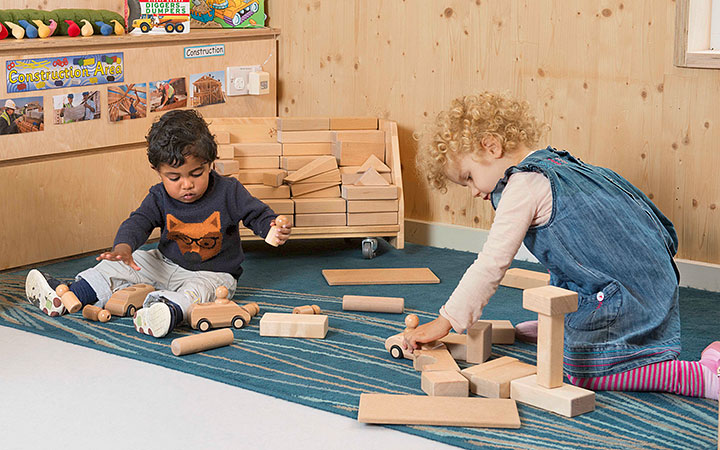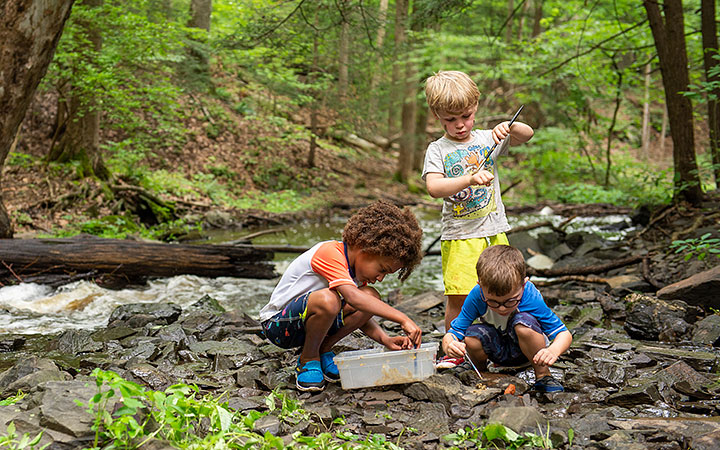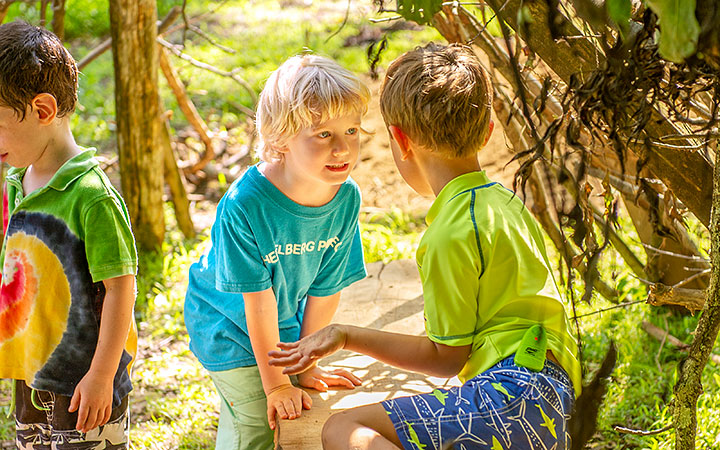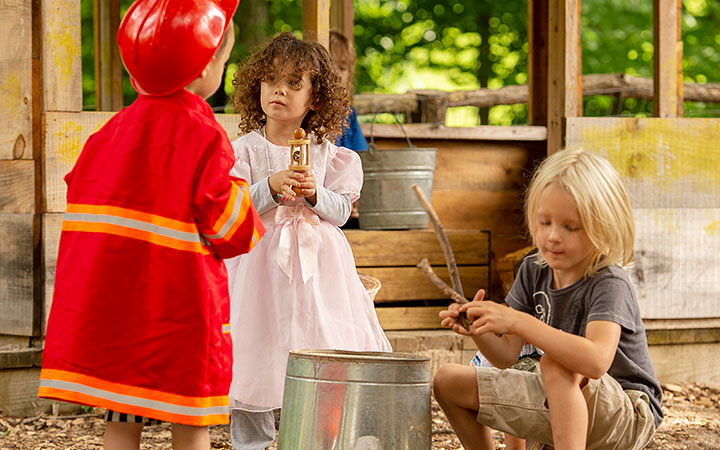Mildred Parten and her Six Stages of Play
| March 2023Born in America in 1902, Mildred Parten grew up at an exciting time for the studies of sociology, psychology and child development. A contemporary of Jean Piaget and Leo Vygotsky, Parten was a sociologist at heart and a researcher at the University of Minnesota’s Institute of Child Development (previously called the Institute of Child Welfare), where she worked on and completed her doctoral dissertation in 1929. This work led her to develop her theory on the six stages of child’s play. Her ideas were groundbreaking and her stages are still influential today.
Perhaps surprisingly, little seems to be known, or recorded, about Mildred Parten as a person, but as a sociologist it is safe to say that she had a deep interest in people and how groups of individuals interact with each other. A forerunner in the observation of children, Parten based her doctorate on the relationship between play and social development in the pre-school years. Using observations carried out between October 1926 and June 1927 at the Nursery School in her department at the University, Parten aimed to do something that had never been done before: to study ‘the period when adjustment to the group is first acquired and practiced.’ (Parten 1932: 243) In other words, to see how children react to new social situations from a young age, before external factors ‘…such as customs, mores, traditions, social controls, past experiences in groups…’ (Parten 1932: 243) have had a chance to influence those reactions in older children and adults. This interest in the genetic side of sociology is clear in the opening lines of her article, ‘Social participation among pre-school children’, which was based on her dissertation and published in 1932. She argues that the ‘...genetic approach to the study of social motivation and adjustment promises to reveal group behavior which is only slightly affected by these complex social factors. The reactions of children are more or less spontaneous and overt and therefore perceptible to investigators.’ (Parten 1932: 243)
Using one-minute observations, taken during a period of free play at the same time each day, 42 children aged from under 2 to 4 years and 11 months were studied. During the process of her study, Parten observed different ways in which the children played, participated and behaved both individually and in groups. This led her to distinguish six different types of social participation, or play, as described below:
- Unoccupied behaviour – when the child appears not to be playing or participating at all, but ‘...occupies himself with watching anything that happens to be of momentary interest. When there is nothing exciting taking place, he plays with his own body, gets on and off chairs, just stands around, follows the teacher, or sits in one spot glancing around the room.’ (Parten 1932: 249)
- Onlooker – the child is an active observer of other children playing, interacts through speech and asking questions, but doesn’t actively participate in the play. This differs from ‘unoccupied behaviour’ because the child is actively showing an interest in what other children are doing.
- Solitary independent play – the child may sit within speaking distance of other children but plays alone with different toys to the others, without watching what other children are doing and without any interaction with any other children.
- Parallel activity – when the child plays independently but alongside other children, with the same or similar toys, but without direct interaction with the other children. ‘He plays beside rather than with the other children. There is no attempt to control the coming or going of children in the group.’ (Parten 1932: 250) This type of play is related to ‘solitary independent play’ as, although in a group situation, the child is playing on his own.
- Associative play – the child plays together with other children as a group and they talk about the activity they are all involved in together. They share toys, ‘…engage in similar if not identical activity…’ (Parten 1932: 251), but the activity is not organised around a shared goal and ‘…each child acts as he wishes.’ (Parten 1932: 251) There is still a degree of individual play, although it is a more sociable form of group play than in the parallel activity above.
- Cooperative or organized supplementary play – the child participates in organized group play, where one or more individuals take the lead by directing the other children, and there is a shared goal or aim. This type of play may be ‘… organized for the purpose of making some material product, or of striving to attain some competitive goal, or of dramatizing situations of adult and group life, or of playing formal games.’ (Parten 1932: 251) As a result, there is a high level of cooperation and communication between the individual children. There is also the potential for individual children to feel a part of the group, or to feel excluded if they are not able to become involved in the common activity.
As the last three stages are more sociable forms of play, and more closely related to each other, Parten used children playing at the sandbox to help illustrate the differences. In ‘parallel activity’, a group of children are all busy playing with cups, each filling a cup individually and taking no notice of what the other children are doing and with very little interaction. There are no restrictions of who can play with the sand and so children are coming and going freely all the time. By comparison, in ‘associative play’, the children interact with each other, swap cups and sand, invite other children to join them and talk about what they are doing. However, children are free to play with the sand as they wish to and there is no group organization. In ‘organized supplementary play’, on the other hand, an individual child suggests what they should all be doing and different roles are fulfilled by different children. The children criticize each other and there is control over who can and cannot join or leave the group. This type of play involves the highest degree of social interaction and therefore also the highest chance of disagreement between the individuals.
Through her observations, Parten realised there was some correlation between the ages of the children and the types of play and behaviour they participated in. The older the child, the more likely they were to participate socially. For instance, parallel play was observed pretty much across the group of children being observed, regardless of age. This shows that all age groups were confident enough to do their own thing, and the older children were still capable of playing individually. Similarly, all age groups participated in associative play, but the biggest group to consistently play in this way were all over three years old, which suggests that the older age group were more comfortable with this more social form of play. Lastly, the majority of the cooperative or organized supplementary activity was carried out by children over three years old, suggesting that this is a more complex form of play.
Mildred Parten enjoyed a long and varied career and, as already stated, her Stages of Play are still studied and used today, although, as with all such theories, there are criticisms. For instance, some scholars disagree about whether there really are stages of play that children experience, or whether types of play are dependent on other factors, such as the child’s familiarity with their surroundings and other children present. However, these particular points are mentioned by Parten in her study, and it could also be argued that no study can be inclusive of all the possibilities, and therefore these criticisms relate more to the limitations imposed, rather than to the findings themselves. The most important thing to remember, which Parten’s in-depth study highlights in spades, is that all children are individuals and develop at different rates and, as with anything to do with child development, this should be at the heart of everything we do for them.
References
Parten, M. B. (1932). Social participation among pre-school children. The Journal of Abnormal and Social Psychology, 27(3), 243–269.

